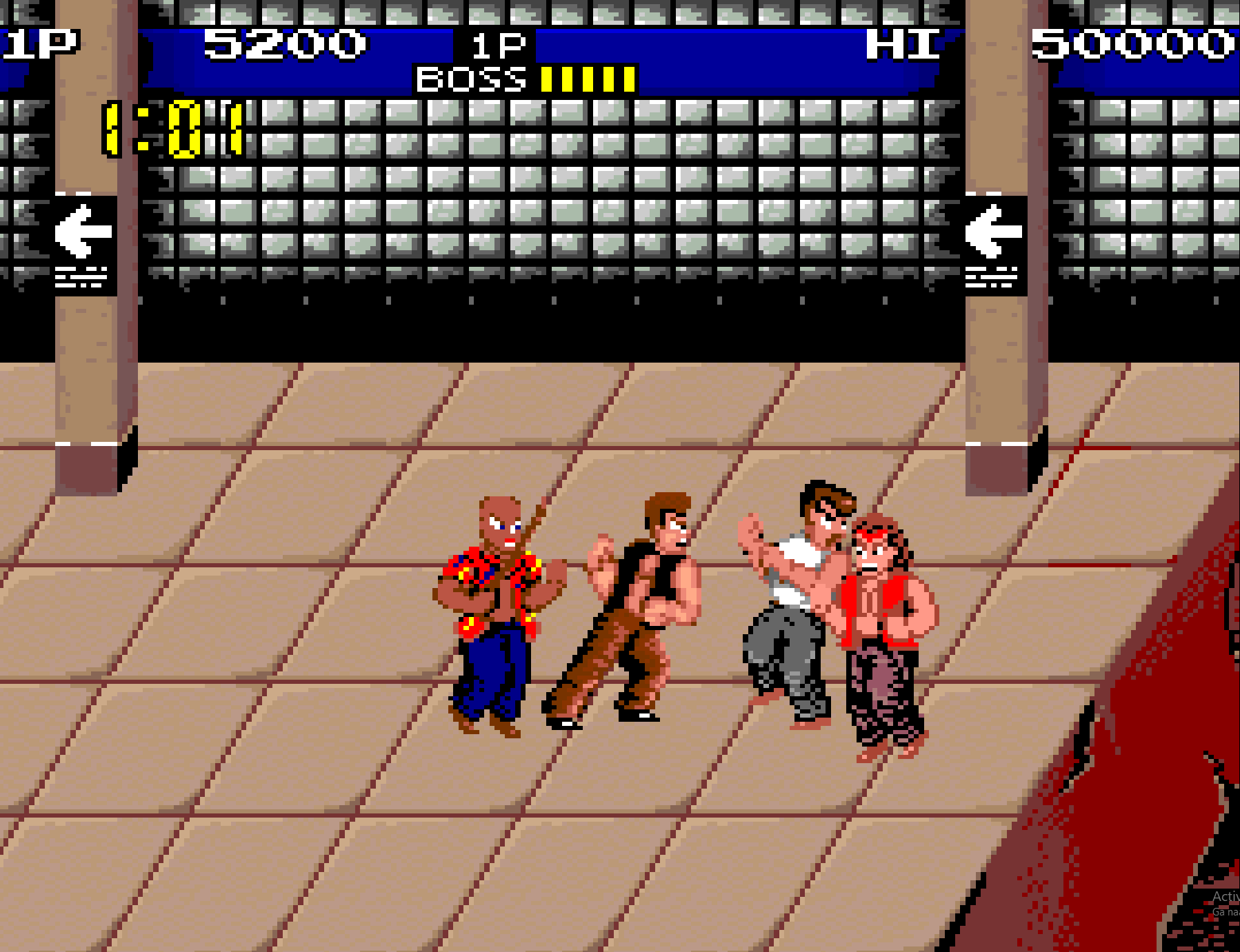Introduction
Released in 1986 by Technōs Japan, Renegade (Nekketsu Kōha Kunio-kun in Japan) laid the groundwork for the modern beat ’em up genre. With its gritty street-fighting action, multidirectional movement, and impactful combat, it was a direct predecessor to Double Dragon and sparked a legacy of side-scrolling brawlers that defined late-'80s arcades.

Development and History
- Developer: Technōs Japan
- Publisher: Taito (Japan), Taito/Technōs (international)
- Release Date: 1986
- Hardware: Custom Technōs arcade board
Originally released in Japan as Nekketsu Kōha Kunio-kun, the game followed a high school student named Kunio fighting to defend his friend from rival gangs. For international markets, the game was heavily localized, becoming Renegade — with a more Westernized aesthetic, new sprites, and a narrative based on gritty street justice.
Renegade was a technical leap from earlier single-plane fighters like Kung-Fu Master, introducing an arena-style layout with freeform movement, varied enemy types, and grappling mechanics. Its success directly led to the creation of Double Dragon in 1987.

Gameplay Video
Gameplay and Mechanics
Players take on the role of a street fighter cleaning up the city across a series of brawler stages.
Key features:
- Multidirectional movement on a belt-scrolling plane
- Three-button controls: punch, kick, and jump/kick
- Grapples, throws, and ground attacks
- Each stage features different gang types and a unique boss
- Levels include a subway platform, streets, biker garages, and gang hideouts
The action unfolds in a series of single-screen arenas where enemies swarm from both sides. The player must clear waves of opponents before progressing to the next stage.
Notable mechanics:
- Jump attacks can knock enemies off subway platforms
- Enemies can grapple or knock down the player
- Multiple enemies can engage simultaneously

Cultural Impact and Legacy
Renegade is often credited as the true origin of the modern beat ’em up genre, predating and inspiring Double Dragon.
- Introduced the brawler format used by Final Fight, Streets of Rage, and others
- Helped establish Technōs Japan as a major arcade developer
- Spawned the long-running Kunio-kun series in Japan, including River City Ransom and Super Dodge Ball
- Localized version (Renegade) featured redesigned characters and Western themes
- Cited by game historians as a pivotal arcade innovation

Fun Facts
- The original Japanese protagonist Kunio was named after Technōs Japan founder Kunio Taki
- The U.S. version removed Japanese school uniforms and gang names for a street gang motif
- Renegade was later ported to NES, Master System, and various home computers
- Inspired the name and tone of numerous late '80s action titles

Conclusion
While often overshadowed by its successor Double Dragon, Renegade was a genre-defining game that shifted beat ’em ups from simple side-scrolling action to gritty, dynamic, hand-to-hand combat. Its influence can be seen in nearly every major brawler that followed.
Want to Go Deeper Into Arcade History?
If this game left you craving more, dive into the complete stories behind some of the most iconic arcade genres and franchises. These articles explore the rise, innovation, and legacy of the games that shaped arcade culture:
- Top 25 Beat ’Em Up Arcade Games of All Time – Discover the ultimate ranking of the greatest beat ’em ups ever to hit arcades
- The History of Beat ’Em Up Arcade Games – From Double Dragon to Final Fight, here’s how brawlers ruled the late ’80s.
- Donkey Kong’s Rise to Fame: How a Desperate Bet Created a Gaming Legend – The untold story of how Nintendo turned failure into a global icon, launching Mario, Miyamoto, and a new era of arcade storytelling
- The Economics of Arcade Gaming: The Golden Age of Coin-Op – This article explores the full arc of arcade economics: the explosive rise, the industry-shaking crash, and the waves of reinvention that kept the business alive
- The Complete History of Mortal Kombat Arcade – How a gritty fighter became a pop culture phenomenon.

